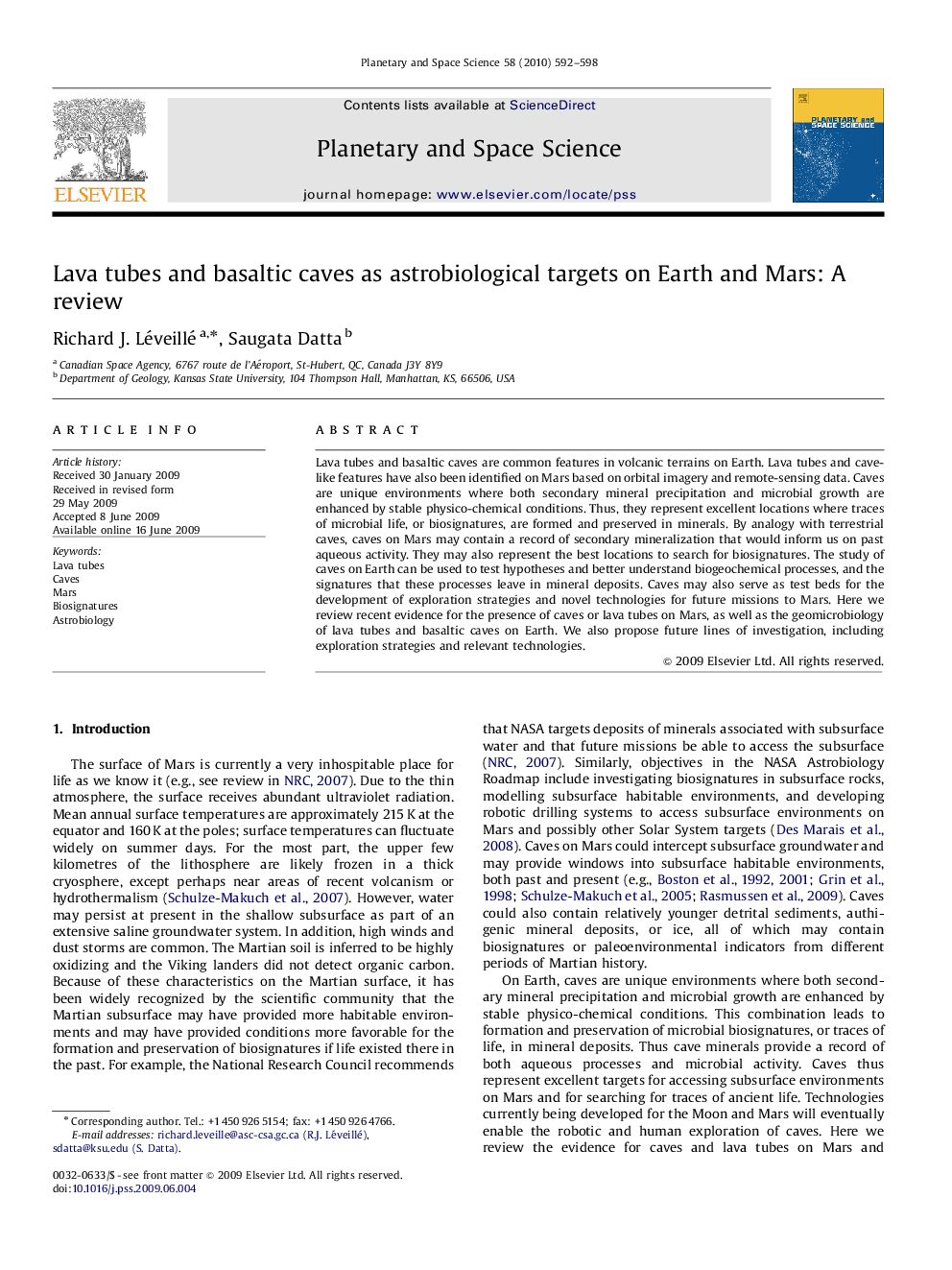| Article ID | Journal | Published Year | Pages | File Type |
|---|---|---|---|---|
| 1781992 | Planetary and Space Science | 2010 | 7 Pages |
Lava tubes and basaltic caves are common features in volcanic terrains on Earth. Lava tubes and cave-like features have also been identified on Mars based on orbital imagery and remote-sensing data. Caves are unique environments where both secondary mineral precipitation and microbial growth are enhanced by stable physico-chemical conditions. Thus, they represent excellent locations where traces of microbial life, or biosignatures, are formed and preserved in minerals. By analogy with terrestrial caves, caves on Mars may contain a record of secondary mineralization that would inform us on past aqueous activity. They may also represent the best locations to search for biosignatures. The study of caves on Earth can be used to test hypotheses and better understand biogeochemical processes, and the signatures that these processes leave in mineral deposits. Caves may also serve as test beds for the development of exploration strategies and novel technologies for future missions to Mars. Here we review recent evidence for the presence of caves or lava tubes on Mars, as well as the geomicrobiology of lava tubes and basaltic caves on Earth. We also propose future lines of investigation, including exploration strategies and relevant technologies.
